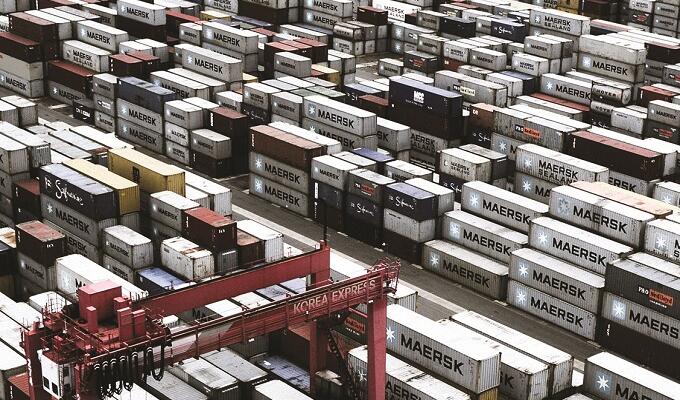

What is the TFA and who will benefit?
Against a backdrop of anti-globalization
sentiment, shuttered regional trade
pacts and shifting geopolitics, the World
Trade Organization’s (WTO) Trade Facilitation
Agreement (TFA) flies in the face of the current
news cycle. However, the global trade
deal that went live 22 February will smooth
customs procedures and cut related red tape.
Here’s what is in the deal and what it means
for you and for global trade.
Many people have not heard much
about this TFA. On the web it was eclipsed
by the Star Wars episode The Force
Awakens, which has the same three-letteracronym.
Through the TFA, governments have agreed to publish a wide range of customs-specific information, including online where possible. This includes outlined measures to help speed up the processing and clearance of goods – such as procedures for accompanying documents to be processed ahead of the arrival of a package – and options for electronic payment of import or export duties. It also encouraged countries to use relevant international standards for import, export or transit formalities, helping to minimize the number of different procedures businesses might have to master to move goods between countries.
The deal even includes a specific provision
on perishable goods. It encourages
countries to adopt procedures to clear such items as quickly as possible while meeting
all relevant domestic requirements and
ensuring that importers can properly store
these items pending their release. This could
be a boon for the world’s rural poor, who
are often exporters of perishable agriculture
products.
In sum, the TFA basically tackles unintentional
barriers to trade and issues that
exist due to outdated customs systems.
Earlier trade deals have typically been about
setting the duties on buying or selling in other
countries’ markets or determining how to
write national rules, such as regulations and
procedures, which treat all products equally
regardless of where they are made.
However, it has not always been easy to
actually get products across borders. Paperwork,
complexity, delays and uncertainty
have discouraged all but the biggest and bravest.
Ignoring the rules or giving up has often
been the approach taken by smaller business.
By cutting transaction costs and improving
transparency, the TFA stands to deliver
gains to smaller businesses, which can be
held back from accessing global markets
because of transaction costs and information
asymmetry. The WTO estimates that TFA
implementation could create some 20 million
new jobs, many if not most of which, would
be in smaller entrepreneurial enterprises.
The new system is unique in other ways.
The TFA allows developing economies to
determine when they will implement individual
provisions and to clearly identify where
they need technical assistance or capacity
building. In other words, countries have not
bargained for lower standards to avoid legal
threats if they are not ready or consider themselves
unready. Instead, the same good governance
standards will be used for everyone,
though some may take longer or need more
help to get things working.
Trade facilitation can also have positive
effects for the world’s poorest countries
because border delays may choke export and economic growth opportunities. Some studies
have found that countries requiring reams of
paperwork for imports are more likely to have
a higher poverty rate or higher inequality rate.
The TFA can also help fight corruption,
with customs automation leaving less room
for corrupt practices that remain rife in some
developing countries and act as a significant
drag on trade and investment.
Trade facilitation is very pragmatic. It does
not involve more trade liberalization or
market-opening and it’s not generally a
political football. All told, the WTO estimates
that the TFA could boost export gains by up
to and beyond $1 trillion per annum. TFA
implementation could reduce trade costs in
WTO members by an average of 14.3% and
the most significant cost reductions will be
in least developed countries.
Developed-country businesses and governments,
including in the United States of
America, have also been big supporters, seeing
the promise of efficiencies at home and abroad.
Just as writing a short letter is often harder than
writing a long one, making border crossing
cheap and simple takes hard work. That work
carries on. Countries have taken great strides
in putting customs procedures online, letting
paperwork precede and following the actual
movement of goods and so on.
The people who know the ins and outs
of getting goods across borders are generally
those who are trying to do so most often.
But dedicating time to the common good
is draining, even for the most communityspirited.
Hybrid partnerships such as the
Global Alliance for Trade Facilitation, which bring together donor funding with business
priorities and expertise, can help to
get reforms moving.
Now that the deal is in play, a series of
institutional arrangements will be activated
to help support its implementation. The
WTO will house a Committee on Trade
Facilitation, which will provide a space
for information and exchange with other
international organizations such as the
World Customs Organization (WCO) and
allow countries to regularly review progress
in TFA operation and implementation.
One important question looking ahead
is how governments and stakeholders might
build on the agreement. The TFA mainly tackles
goods moving across borders, so one obvious
approach would be to copy the model
for other types of trade. A similar logic could
be applied to investment, helping to tackle
some of the barriers foreign investors might
have to investing in the critical infrastructure
needed for sustainable development. Trade
in services and e-commerce might also benefit
from such an approach.
Maybe the Star Wars comparison is not so far off the mark: tractor-like beams carrying fast-growing digital data flows now enable vast amounts of trade and business activity, from more efficient value chains to new online platforms connecting businesses with consumers. What the TFA shows us is that the physical world may finally be catching up.



